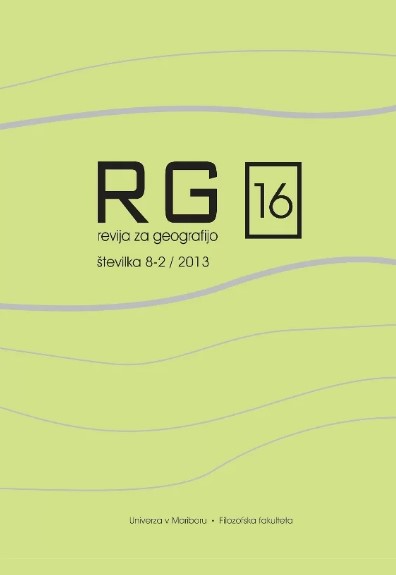Urban Blight and Urban Redesign: Schicksal und/oder Chance
DOI:
https://doi.org/10.18690/rg.8.2.3911Keywords:
urban blight, urban redesign, small town, vacancies, demolition, reform partnershipAbstract
The phenomenon of urban blight dates back to the 19th century when industrialisation starting in Europe and North America initiated an uncontrolled urban growth in combination with strong demand in cheap an quickly constructed housing. Ghettoisation of mainly the working-class population and other “marginal groups” were the consequence together with a constant decay of single buildings, whole blocks and quarters. These general aspects of urban blight with its additional facettes or aspects residential, commercial, industrial, physical, functional and social blight can be presupposed and will not be topic of this paper. Nevertheless urban blight is by no means a topic of the past, it still today challenges apart from geographers a remarkable number of other disciplines (urban and landscape planners and designers, economists, sociologists, medical sciences, etc., not to forget politicians, the media, and last but not least the city dwellers themselves). While urban blight, urban decay, - decline, or - crisis originally seemed to be a problem of the big cities and metropolises it meanwhile also affects the small towns and centers. By the example of two Styrian small towns, Murau and Eisenerz, both counting less than 5.000 inhabitants each some of the many reasons for their being confronted with symptoms of urban blight will be addressed together with the up to now largely unsolved question which possible counter strategies could be successfully applied. One namely “urban redesign” has been chosen from a number of others mainly because it has been selected by the city of Eisenerz as a strategy against urban blight and to fight the dramatic population losses of 7867 citizens between 1951 (pop.: 12948) and 2010 (pop.: 5087). The crucial questions for the future to be discussed facing the present world wide monetary crisis will be: Will there be enough money to finance the necessary rescue measures? Who pays and bears the risks of a failure? Is it worth while and justified to invest huge amounts of public money into a seemingly bottomless barrel or borrowing an idea from the human hospice-movement: would it not be wiser, more human, and cost-efficient to spend much less money for those measures only that are needed to guarantee a patient (city) with little or uncertain perspectives for the future a survival in dignity. Knowing that the hospice movement was severely questioned in its initial phase although today it is widely accepted and respected the transformation of this idea into the urban sphere as one means to discuss the problem of urban decay and urban blight seems justified.
Downloads
References
Albertoni, C. 2012: „Neue Bezirke. Aus sechs mach drei.“ In. Kleine Zeitung, Graz, 24. 4. 2012.
Baltzer, A. 2010: persönliches Interview geführt von H. Wallner am 04. 06. 2010
Gigler, C. 2011: Der neue Weg des Miteinanders. Kleine Zeitung, Graz. 22. 9. 2011.
Österreichisches Institut für Raumplanung. 2011: ÖIR e-letter. Ausgabe 10/2011. Wien.
Lichtenberger, E. 1998: Stadtgeographie. Stuttgart
Nußmüller, W. und Rosegger, R. (2008): Ideenwettbewerb Eisenerz 2021. Eisenerz.
Kleine Zeitung. 2011: „Wir wollen die Steiermark neu ordnen“, Graz, 16. 9. 2011.
Statistik Austria, 2010: Murau-Probezählung 2006. Wien.
Die Presse. 2010: „Österreich gesund geschrumpft. Land der Regionen, zukunftsreich“. Wien. 20. 2. 2010.
Der Standard. 2010: „Die Abwanderung junger Leute führt zu Negativspirale“. Wien. 19. 2. 2010.
http://www.sommergipfel.at/steiermark/strukturreform/2833978/neue-wege-des-miteinanders. 22. 9. 2011.
Downloads
Published
Issue
Section
License
Copyright (c) 2013 Walter Zsilincsar

This work is licensed under a Creative Commons Attribution 4.0 International License.
